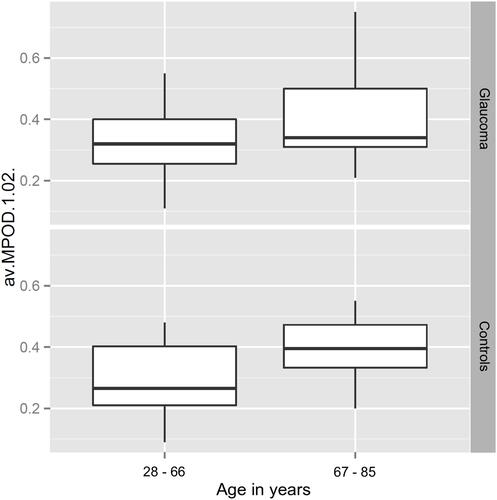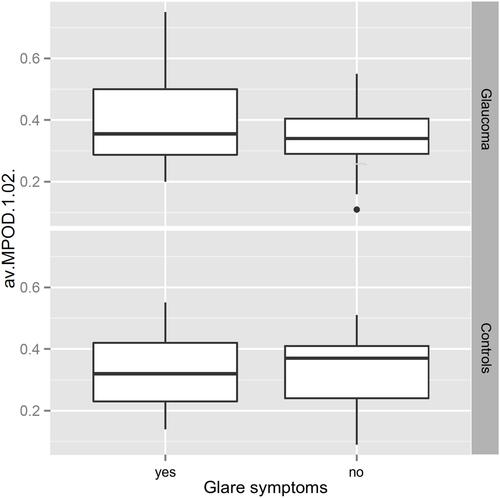Figures & data
Table 1 Characteristics of the Study Population
Table 2 Three Multiple Linear Regression Models to Assess the Correlation Between Presence of Glaucoma, Age, Sex, Lens Status, MPOD at 0.51°, 1.02° and 1.99° Retinal Eccentricity
Figure 1 Correlation of average macular pigment optical density (MPOD) at 1.02° retinal eccentricity, glaucoma disease and age. MPOD is positively correlated with age (see ).

Table 3 Logistic Regression Model to Assess the Correlation of Glare Symptoms with the Co-Variates Glaucoma, Age, Sex, Lens Status, MPOD at 1.02° Retinal Eccentricity

